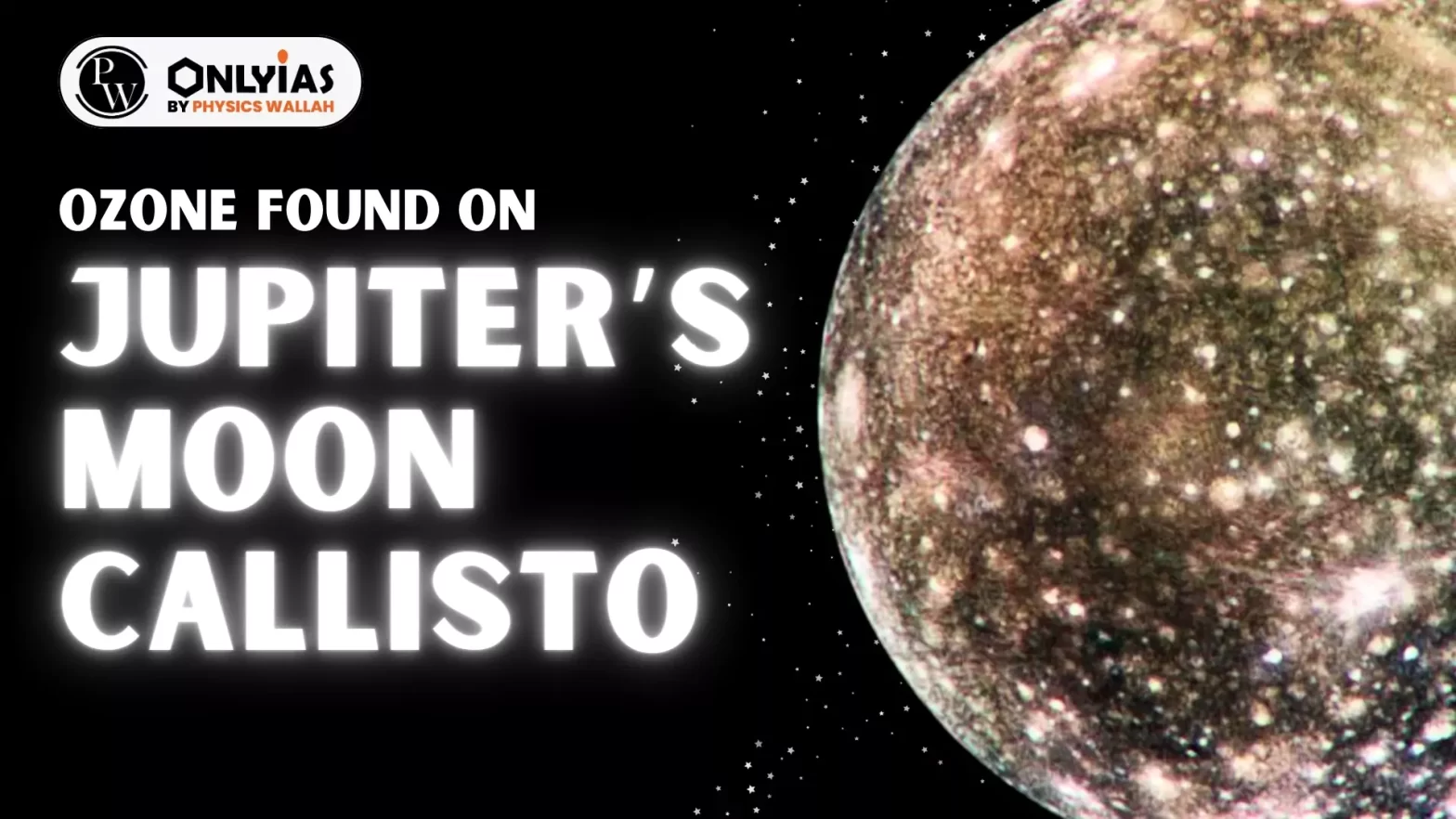![]() 2 Apr 2024
2 Apr 2024

As per the recently published study in the journal Icarus, an international team of scientists has discovered strong evidence indicating the presence of ozone on Jupiter’s moon Callisto.
| Relevance for Prelims: Our Solar System, Large Ozone Hole Detected Over Antarctica, and Ozone Layer Depletion. |
|---|
|
|---|
|
|---|

| Prelims PYQ (2022):
In the context of WHO Air Quality Guidelines, consider the following statements: 1. The 24-hour mean of PM 2.5 should not exceed 15 µg/m3 and annual mean of PM2.5 should not exceed 5 µg/m3. 2. In a year, the highest levels of ozone pollution occur during the periods of inclement weather. 3. PM10 can penetrate the lung barrier and enter the bloodstream. 4. Excessive ozone in the air can trigger asthma. Which of the statements given above are correct ? (a) 1, 3 and 4 (b) 1 and 4 only (c) 2, 3 and 4 (d) 1 and 2 only Ans: (b) |
|---|
| Must Read | |
| NCERT Notes For UPSC | UPSC Daily Current Affairs |
| UPSC Blogs | UPSC Daily Editorials |
| Daily Current Affairs Quiz | Daily Main Answer Writing |
| UPSC Mains Previous Year Papers | UPSC Test Series 2024 |
<div class="new-fform">
</div>